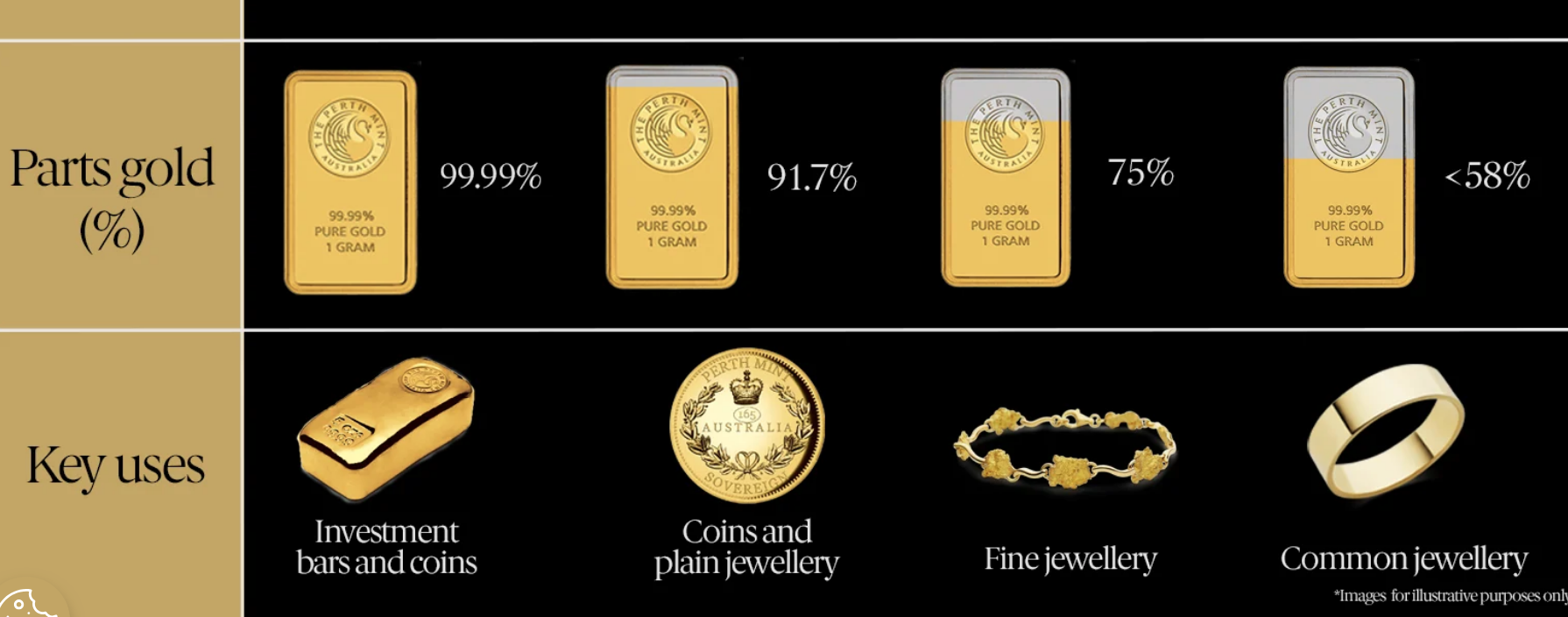Looking to invest in gold in Malaysia but not sure where to start? Evaluating the purity of gold is essential before making any investments. In this article, we will guide you through the process of evaluating the purity of gold, providing you with the necessary information to ensure you make a wise investment decision. Whether you are a beginner or an experienced investor, these tips and insights will help you navigate the world of gold investment in Malaysia with confidence. Stay tuned for our step-by-step guide on how to assess the purity of gold before taking the plunge.

Factors to Consider When Evaluating the Purity of Gold
Investing in gold can be a lucrative endeavor, but it’s essential to ensure that the gold you are purchasing is pure and of high quality. There are several important factors to consider when evaluating the purity of gold. By understanding hallmarking, testing methods, gold fineness, karat, acid testing, magnet testing, specific gravity testing, X-ray fluorescence (XRF), and seeking professional assessments, you can make informed decisions and safeguard your investment.
Hallmarking
What is Hallmarking?
Hallmarking is the process of certifying the purity of gold by stamping it with specific marks or symbols. These marks are standardized and indicate the quality and authenticity of the gold. In Malaysia, the hallmarking system is regulated by the Ministry of Energy, Science, Technology, Environment, and Climate Change (MESTECC). It is crucial to understand and recognize these hallmarks when evaluating the purity of gold.
Malaysian Hallmarks
In Malaysia, the national hallmark consists of the “Malaysia” wordmark and a “sun and moon” symbol. The presence of these hallmarks assures buyers that the gold has been tested and certified by a recognized assay office. Additionally, individual assay offices may have their own marks, further confirming the authenticity of the gold.
Hallmarking Standards
The Malaysian hallmarking standards are based on international standards, ensuring that the gold meets certain purity criteria. The purity of gold is measured in terms of fineness, which is the proportion of pure gold in the alloy. The minimum fineness required for gold jewelry in Malaysia is 375, indicating that the gold contains 37.5% pure gold.
Recognized Assay Offices
To ensure the accuracy and reliability of hallmarking, it is crucial to purchase gold that has been tested and certified by recognized assay offices. In Malaysia, the Department of Standards Malaysia (STANDARDS MALAYSIA) is responsible for overseeing the activities of assay offices. STANDARDS MALAYSIA has set strict guidelines and requirements for these offices to ensure the accuracy of their testing methods and certification processes.
Checking Hallmarks
When evaluating the purity of gold, carefully check the hallmarks on the jewelry or bullion. Look for the national hallmark, the assay office mark, and additional marks indicating the fineness of the gold. Conducting thorough research and understanding the hallmarking system will help you make informed decisions and ensure the purity of your gold investment.

Testing Methods
Physical Testing
Physical testing involves using various tools and techniques to examine the physical properties of gold. One common physical test is the visual inspection for color and texture. Pure gold is naturally yellow and has a distinct luster. Additionally, weighing the gold can help determine its density and overall quality.
Chemical Testing
Chemical testing involves using specific reagents or acids to determine the purity of gold. The most common acid test is the nitric acid test, which involves applying nitric acid to the gold and observing any reaction. Pure gold will not react to nitric acid, while lower-quality gold or gold alloys will show signs of discoloration or react with the acid.
Non-Destructive Testing
Non-destructive testing methods allow for the evaluation of gold purity without damaging the item. One widely used non-destructive method is X-ray fluorescence (XRF) testing, which uses X-ray technology to analyze the composition of the gold. Another non-destructive test is the magnet test, in which a magnet is used to check if the gold is attracted to it, indicating the presence of impurities.
Combining Different Methods
To obtain the most accurate evaluation of gold purity, it is recommended to combine different testing methods. By utilizing both physical and chemical tests, you can cross-reference the results and ensure that the gold meets the desired purity standards. Non-destructive testing methods can also be used as supplemental tests to provide further assurance.
Gold Fineness
Understanding Gold Fineness
Gold fineness refers to the purity of gold and is expressed as a proportion of pure gold in the alloy. It is commonly measured in terms of parts per thousand. For example, if a gold alloy has a fineness of 750, it means that it contains 750 parts of pure gold out of 1000 parts in total.
Reading Gold Fineness Markings
Gold fineness markings are typically engraved or stamped on gold jewelry or bullion. These markings indicate the proportion of pure gold in the alloy. For example, a marking of “750” denotes 750 parts per thousand, which is equivalent to 75% pure gold. By understanding these markings, you can easily determine the fineness of gold.
Standard Gold Fineness Values
Different countries may have varying standards for gold fineness. In Malaysia, the minimum fineness required for gold jewelry is 375, while other countries may have stricter standards. It is important to be aware of these standards when evaluating the purity of gold from different sources.
Verifying Fineness with Testing
While reading the gold fineness markings can provide a preliminary indication of purity, it is crucial to verify the fineness through testing methods. Physical and chemical tests, such as acid testing and XRF, can confirm the actual fineness and ensure that the gold meets the desired purity criteria.
Understanding Karat
What is Karat?
Karat is another measurement used to indicate the purity of gold, particularly in the United States and some other countries. Karat refers to the proportion of pure gold in the alloy, expressed as a fraction of 24. For example, 24 karat gold is considered pure gold, while 18 karat gold contains 18 parts of gold out of 24.
Karat vs. Carat
It is important to note the distinction between karat and carat. Karat refers to the purity of gold, while carat refers to the weight of gemstones, such as diamonds. The two terms are often confused due to their similar pronunciation, but they have different meanings in the context of gold.
Karat Markings
Karat markings are typically used to indicate the purity of gold jewelry in countries that follow the karat system. Common karat markings include 24K, 18K, and 14K, among others. These markings provide a clear indication of the gold’s purity and can help buyers make informed decisions.
Karat Conversion
If you come across gold jewelry marked with a different karat system, it is important to convert it to the standard karat system for better understanding. Conversion charts are available to help you determine the equivalent karat value in the system you are familiar with.
Determining Karat Purity
To determine the karat purity of gold, refer to the karat markings on the jewelry or bullion. Additionally, you can verify the karat purity through testing methods, such as acid testing or XRF. Understanding the karat system will enable you to evaluate the purity of gold accurately.
Acid Testing
How Does Acid Testing Work?
Acid testing is a commonly used method to evaluate the purity of gold. It involves applying nitric acid to the gold and observing the reaction. Pure gold will not react to the acid, while lower-quality gold or gold alloys will show signs of discoloration or react with the acid.
Materials Needed
To perform acid testing, you will need the following materials:
- Nitric acid: A small bottle or vial of quality nitric acid.
- Testing stone: A smooth, unglazed stone or ceramic surface to conduct the test.
- Test needle or file: A needle or file to create a small scratch on the gold item.
- Protective gloves and goggles: Safety gear to protect yourself from potential chemical hazards.
Performing Acid Testing
To perform acid testing, follow these steps:
- Choose a discreet spot on the gold item and create a small scratch using the test needle or file.
- Apply a drop of nitric acid to the scratch on the testing stone.
- Observe any changes in color or reaction between the acid and the scratched area.
- Compare the results to a color chart or reference guide to determine the approximate purity of the gold.
Interpreting the Results
The results of acid testing can help provide a rough estimate of the gold’s purity. If the scratched area remains unchanged or fades slowly, the gold is likely of high purity. If the scratched area turns green or brown, it indicates the presence of lower-quality gold or alloys. It is important to note that acid testing provides a relative indication and should be supplemented with other testing methods for a more accurate assessment.

Magnet Test
Why Use the Magnet Test?
The magnet test is a simple and non-destructive method to evaluate the purity of gold. It involves checking if the gold is attracted to a magnet, which can indicate the presence of impurities or non-gold metals in the alloy.
Procedure for the Magnet Test
To perform the magnet test, follow these steps:
- Hold a strong magnet near the gold item.
- Observe if there is any attraction or movement between the gold and the magnet.
- If the gold is attracted to the magnet, it suggests the presence of impurities or non-gold metals in the alloy.
Interpreting the Results
If the gold is attracted to the magnet, it does not necessarily mean that the item is fake or of low purity. Some gold alloys may contain small amounts of magnetic metals, such as iron, that can cause attraction. However, if the gold item shows no attraction to the magnet, it provides a positive indication of higher purity.
Specific Gravity Test
How Does the Specific Gravity Test Work?
The specific gravity test is a reliable method to determine the purity of gold based on its density. The density of a substance is compared to the density of pure gold to assess its purity. Pure gold has a specific gravity of 19.3, which means it is 19.3 times denser than an equal volume of water.
Equipment Needed
To conduct the specific gravity test, you will need the following equipment:
- A digital scale: An accurate scale capable of measuring the weight of the gold item.
- A graduated cylinder: A glass cylinder with volume markings for measuring liquids.
- Water or a suitable liquid: A liquid with a known and consistent density, such as water or specialized testing solutions.
Conducting the Specific Gravity Test
To perform the specific gravity test, follow these steps:
- Weigh the gold item on the digital scale and record its weight.
- Fill the graduated cylinder with water or the chosen liquid.
- Carefully lower the gold item into the liquid, ensuring that it is fully submerged.
- Observe the change in the liquid level and record the new volume.
- Use the weight and volume measurements to calculate the specific gravity of the gold.
- Compare the specific gravity of the gold to the expected value for pure gold to assess its purity.
Analyzing the Results
A specific gravity value close to the expected value of pure gold (19.3) indicates a higher purity of gold. Deviations from the expected value may suggest the presence of impurities or other metals in the alloy. The specific gravity test provides a reliable method to accurately evaluate the purity of gold.

X-ray Fluorescence (XRF)
Introduction to X-ray Fluorescence (XRF)
X-ray fluorescence (XRF) testing is a non-destructive method used to analyze the composition of materials, including gold. It works by measuring the characteristic X-rays emitted by different elements when subjected to X-ray irradiation.
How XRF Analyzes Gold Purity
During XRF testing, the gold item is exposed to X-rays, causing its atoms to emit characteristic X-rays. These emitted X-rays are detected and analyzed by the XRF instrument, which determines the presence and quantity of different elements in the gold. This analysis allows for the evaluation of the gold’s purity and the identification of any impurities or non-gold metals present.
Advantages and Limitations of XRF Testing
XRF testing offers several advantages for evaluating gold purity. It is non-destructive, meaning the gold item remains intact and undamaged during the testing process. XRF is also highly accurate and provides detailed information on the elemental composition of the gold. However, XRF testing may require specialized equipment and trained personnel, making it less accessible for individual investors.
XRF Testing Process
To conduct XRF testing, the gold item is placed in the XRF instrument, which emits X-rays and analyzes the resulting characteristic X-rays. The instrument displays the elemental composition of the gold, including the purity and any detected impurities. Interpreting the XRF results requires expertise and knowledge of gold alloys and the expected elemental composition.
Interpreting XRF Results
XRF results provide a comprehensive analysis of the gold’s purity and composition. The presence of non-gold metals or impurities can be identified and quantified, allowing for an accurate assessment of the gold’s quality. XRF testing is often considered one of the most precise methods for evaluating gold purity.
Fire Assay
Fire assay, also known as cupellation, is a traditional and highly precise method used to determine the purity of gold. While it is not commonly used for routine evaluation, it is considered the gold standard for assessing gold purity, especially in specialized laboratories.
The fire assay process involves several steps, including the following:
- The sample is weighed and melted in a crucible.
- During the melting process, the non-gold metals oxidize and are absorbed by a porous cupel made from bone ash or other materials.
- The remaining gold is then weighed to determine its pure gold content.
Fire assay provides highly accurate results and is suitable for testing gold samples with a high level of precision. However, due to its complexity and the need for specialized equipment and expertise, fire assay is typically reserved for professional assessment in professional laboratories.
Professional Assessment
Seeking Professional Expertise
If you are uncertain about evaluating the purity of your gold investment, seeking professional expertise is highly recommended. Gold investment experts, such as reputable jewelers or professional assay offices, have the knowledge and experience to assess the quality and authenticity of gold accurately.
Choosing a Reliable Assayer
When selecting an assayer, it is essential to choose a reliable and reputable professional or institution. Look for established jewelers with a history of excellence and certification from recognized assay offices. Additionally, check for customer reviews or seek referrals from trusted sources to ensure the assayer’s credibility.
Utilizing Referrals and Reviews
Referrals and reviews from friends, family, or fellow investors can provide valuable insights into the quality and reliability of assayers. Personal experiences and recommendations can help you make an informed decision and choose an assayer that meets your specific needs.
Consideration for Lab Testing
In some cases, it may be necessary to send your gold samples to a specialized laboratory for detailed testing and evaluation. If you are considering significant gold investments or require extensive analysis, lab testing can provide comprehensive results that surpass traditional methods. Labs equipped with advanced testing equipment and experienced professionals can offer in-depth assessments of gold purity and provide valuable insights into your investment.
In conclusion, evaluating the purity of gold is essential before investing, as it ensures that you are purchasing high-quality gold and safeguarding your investment. Factors such as hallmarking, testing methods (including physical, chemical, and non-destructive), gold fineness, karat, acid testing, magnet testing, specific gravity testing, X-ray fluorescence (XRF), and seeking professional assessments play crucial roles in determining the purity and authenticity of gold. By understanding these factors and utilizing appropriate testing methods, you can make informed decisions and confidently invest in gold.








